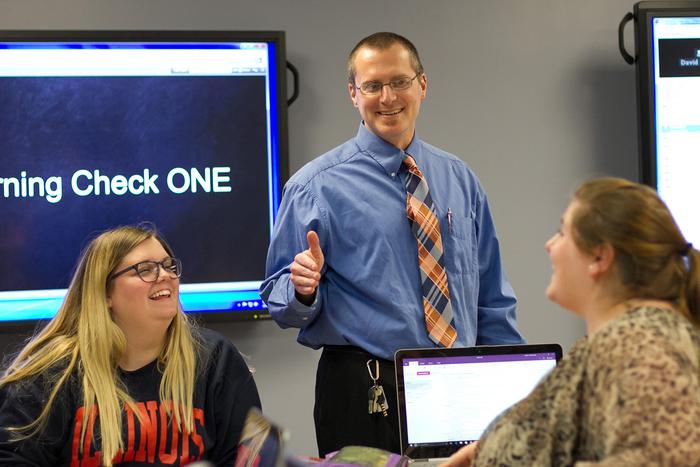URBANA, Ill. – Colleges and universities often highlight leadership development as a critical component of their curriculum — but there is no clear consensus on what constitutes effective leadership education. In a new paper, two educators from the University of Illinois Urbana-Champaign and John Carroll University provide a roadmap for training competent leaders, suggesting a comprehensive, practical approach for postsecondary institutions to follow.

Credit: College of ACES
URBANA, Ill. – Colleges and universities often highlight leadership development as a critical component of their curriculum — but there is no clear consensus on what constitutes effective leadership education. In a new paper, two educators from the University of Illinois Urbana-Champaign and John Carroll University provide a roadmap for training competent leaders, suggesting a comprehensive, practical approach for postsecondary institutions to follow.
“Our purpose was to discuss what it means to develop leaders and what a model for leadership education could look like, based on what we know about adult development and the needs of today’s contemporary organizations. The goal is to help people in higher education think in a more organized way about what they want to accomplish and how they can set their programs up to get there,” said David Rosch, associate professor in the Department of Agricultural Leadership, Education & Communications, part of the College of Agricultural, Consumer and Environmental Sciences (ACES) at Illinois.
Leadership education should encompass two dimensions: horizontal and vertical development. Both approaches are necessary and complement each other, Rosch said.
“Horizontal development is skill development. These are things you can train someone to do and competencies you can master. If you’re going to be an effective leader, you need to know different aspects of conflict management and be able to decide which of these are most productive in a particular context,” he stated.
Vertical development is about wisdom and maturity, being able to understand the world from a bigger perspective than just your own viewpoint and thinking about your responsibilities in a more global sense. It progresses in a continuum from thinking primarily about yourself, then considering one’s group, and finally being able to consider the greater good.
“You can have a good toolbox and know how to use your tools, but if you don’t combine that with maturity and wisdom, you are still going to make poor decisions,” Rosch stated. “On the other hand, if you don’t have your toolbox of competencies, you might be able to understand the bigger perspective, but you won’t know what to do about it. You need both horizontal and vertical skills to be an effective leader.”
Rosch said most leadership education programs are good at providing horizontal skills but do not necessarily combine them with vertical skill development. He and co-author Scott Allen, associate professor of management in the Boler College of Business at JCU, provide a pathway to do so by outlining concepts and strategies that can be embedded in the coursework.
They base their suggestions on a popular model of adult learning that includes five pillars focusing on different dimensions:
- Cognitive learning – information processing and knowledge acquisition
- Behavioral learning – skill development
- Humanist learning – self-actualization and development of personal goals
- Constructivist learning – making meaning of one’s experiences through critical reflection
- Social cognitive learning – how environment and culture shape understanding.
All five orientations need to be integrated in order for horizontal and vertical leadership development to be successful, Rosch noted.
Some examples of instructional elements to address these dimensions include a multiple choice exam (cognitive), role-playing as manager and employee (behavioral), writing an essay on how ethical leadership practices affect students’ career goals (humanist), reflecting on an ethical dilemma they have faced (constructivist), and a guest lecture from an experienced manager (social cognitive).
“This model of learning has been around for 20 years, but it hasn’t been consistently used in leadership education. Dr. Allen and I show the answers are available, we just need to apply them in a coherent way, so leadership development is not just a concept in a mission statement, but a mission-critical outcome of higher education,” Rosch said.
“There are already great things going on across college campuses, but it’s often done without clear guidelines. We’re trying to provide people who design instructional curricula with a comprehensive checklist they can use to see what they might be missing. These principles can also be implemented for quality control and assessment to ensure effective leadership education,” he concluded.
The paper, “From mission statements to mission critical: a conceptual model for getting serious about student leader development,” is published in the Journal of Leadership Education [DOI 10.1108/JOLE-01-2024-0003].
Journal
Journal of Leadership Education
Method of Research
Commentary/editorial
Subject of Research
Not applicable
Article Title
From mission statements to mission critical: a conceptual model for getting serious about student leader development
Article Publication Date
11-Jun-2024



